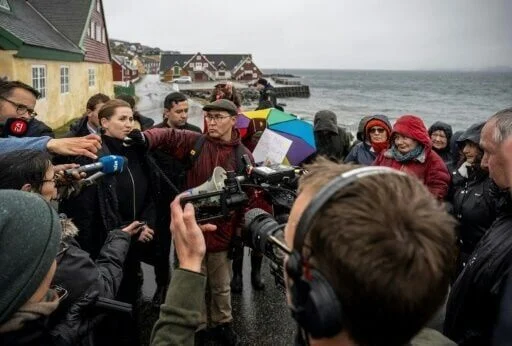Birkerød: Henriette Berthelsen was separated from her family at the age of 11 and forced to wear contraceptive pills, a trauma that haunted her so much that she and 142 other Greenlandic women sued the Danish state.
“I hit a lot of stuff,” Berthelsen said.
“According to our medical records, I have had an IUD (intrauterine device) inserted nine times since I was 13,” the psychologist and activist explained with relief and dignity.
“I remember when it hurt so much,” he told AFP at his home on the outskirts of Copenhagen.
Berthelsen, now 66, is one of 143 Greenlandic Inuit who sued the Danish state for violating their rights during a campaign to prevent forced abortions from the 1960s to the 1980s.
About 4,500 women who gave birth were forced to undergo the procedure, often without the consent of their families.
Since 1953, Denmark has campaigned to limit the birth rate in the Arctic, which has no colonies but still controls.
Berthelsen’s parents never approved of his role.
On the advice of the state, she was sent to Denmark as a young girl for a year, then to a Danish boarding school far from her hometown in Greenland, the capital of Nuuk, in Qekertsuratsiaat in southwest Greece.
Taking a picture of the IUD from then, he remembers a girl with long black hair.
For a long time he did not tell anyone about his experience, remembering his mother’s teaching: ‘Never fight Dan.’
For many of his classmates, the experience had a profound effect.
Berthelsen herself gave birth to two children.
He is now campaigning to get the Danish state to provide treatment for victims living in Denmark.
Greenland has paid such benefits to those living in the area.
Ebbe Volkardsen, a lecturer at Nuuk University, said the woman is seeking justice now because there is enough time.
One of the victims spoke about his injuries in the media years ago.
In 2022, a podcast series by the Danish public broadcaster DR revealed the scope of the campaign.
“It is important that the Danish state takes responsibility,” Berthelsen said.
“In the 2020s, the authoritarian elements of the campaign became an outstanding example of the interaction between Greenlanders and Danes in a colonial and post-colonial context,” historian Søren Rood told AFP.





















